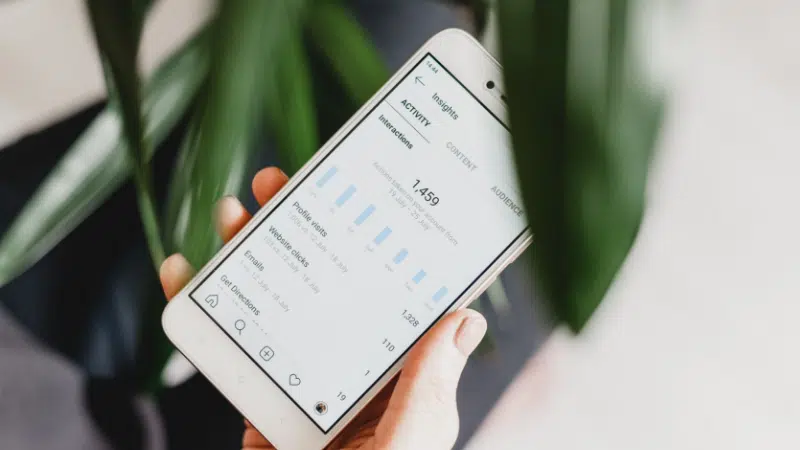By now, you should know that Instagram Stories are a very important part of your social media strategy.
If you’re not already investing in creating quality content for this facet of one of the world’s most popular apps, you’re missing out. Instagram stories can drive traffic to important websites, help you form stronger bonds with your fans, and provide you with metrics that give you insights into who is tuning in and what they like.
If you’ve never even thought about the metrics connected to your Instagram stories that you can observe, here’s a quick look at what they are, how to access them, and how you can improve upon what you’re already doing to get more out of this platform.
Here’s what you need to know:
If You Don’t Have An Instagram Business Profile
If you don’t have an Instagram business profile, you have…just a regular page. That’s okay, and it can be fine for those who have personal accounts where they only want to interact with their friends and family, but if you’re going to use Instagram for any business purposes—and as a musician trying to sell music, tickets, and merchandise, you are, whether you like to think about it like that or not—you should really make the switch, or simply start it off right and begin by creating one.
But, for the sake of this article, let’s say you started a personal Instagram account and you are sticking with it. That’s certainly a choice, and it’s one that severely limits the options you have when it comes to metrics connected to your Instagram stories. In fact, there’s only one concrete metric you can look at if this is the case.
When your story is still live, you can click on the bottom left corner where you see a small eyeball symbol and a number. That tells you how many people have seen your story, and if you click it, Instagram will actually show you every person who has viewed it.
After your story has been up for 24 hours, you can still see the number of views it received if you’ve archived your posts (an option you should do in your settings), though you’ll no longer be able to look at the individuals who watched.
Looking at this one metric, you can play around with what you post, when you upload, and so on. It’s not very exact, but that’s what you get for opting not to go for a business profile.
If You Have An Instagram Business Profile
If you either started off on Instagram by crafting a business profile, or if you follow my advice above and switch to one before you’ve built up too large a following, there’s more you can analyze when it comes to Instagram story metrics.
If you click on your own stories and swipe up, you’ll be shown an individual page with up-to-date information with a number of metrics, such as these four important options:
1. Views
As is the case with non-business profiles, you’ll be able to see how many people, and which people actually watched your stories. From there, you can make simple deductions and play around with how frequently you upload items, what time of day you share images, and so on. Perhaps there are people who look at everything you use that you might not have realized, or maybe some super-fans are missing the sights.
You have to do some qualitative analysis on all this, but it’s worth taking a look at and considering, as there can be a lot you learn simply by glancing at these numbers.
Suggestion to Improve: Try posting at regular intervals, and don’t waste your content by uploading it at odd hours, as most of your fans are probably in the same time zone as you, or at least nearby. Also, this post has some great tips for increasing fan engagement.
2. Shares
As a business profile, those watching your stories are allowed to share what you post with their networks…but are they? You won’t see many, or perhaps any, shares when your content is something banal, but if it is important or even very silly, you may see this number climb. Shares are a great way to reach people who might not already be following you, and anything you can post that gets people to send it to their friends may lead to another follower.
Suggestion to Improve: Important info, like tour dates or when a new single or album is arriving might be shared within your fan base. Fun memes you discover or create could be shared wide, which is always helpful, especially if it relates to your music in some way.
3. Replies
Are people simply watching your content, or are they interacting with it by replying to what you’ve said? Not everything requires them to direct message you, and in fact, you don’t want that. However, there are times when you do want to get people involved, and if you can push people to reply to what you’ve shared, they’ll become more involved, and Instagram’s algorithm will notice this and reward the activity.
Suggestion to Improve: Ask people to reply! Pose questions, ask for their advice, or maybe even just use Instagram’s many add-ons available for use in stories that encourage people to type something back to you.
4. Click-Throughs
Perhaps the most important and helpful of all the metrics, click-throughs show you how many people saw your story, whether it was a video or a static image, and decided to visit your profile. This should always be your goal, as your profile features your name, your bio (which could have info about a new release or a tour), and your link, which could go straight to a streaming service, your website, and so on.
Your click-through rate will probably be pretty low, as is the case with most marketing vehicles, but there’s so much you can do to improve it!
Suggestion to Improve: You can go the blunt route and actually tell people to visit your profile, either for more info or…just because. There are stickers and GIFs that can point to your name in the top left corner, which will serve as a not-so-subtle suggestion to click through. (Hint: this post has even more creative things you can add to your stories to make them 100x better.) You can also hint that there are good reasons for them to visit your page, including more information, new content, and so on.
If you can get more people to watch your stories and then find their way to your account, you may see even more important metrics climb, such as streams, merch sales, ticket sales, YouTube views, and so on.
Keeping an eye on these metrics is super easy and will help you get the most out of what you already do on your social media platforms. What’s not to like about that?
Got a question about any of this? Feel free to let us know in the comments.



